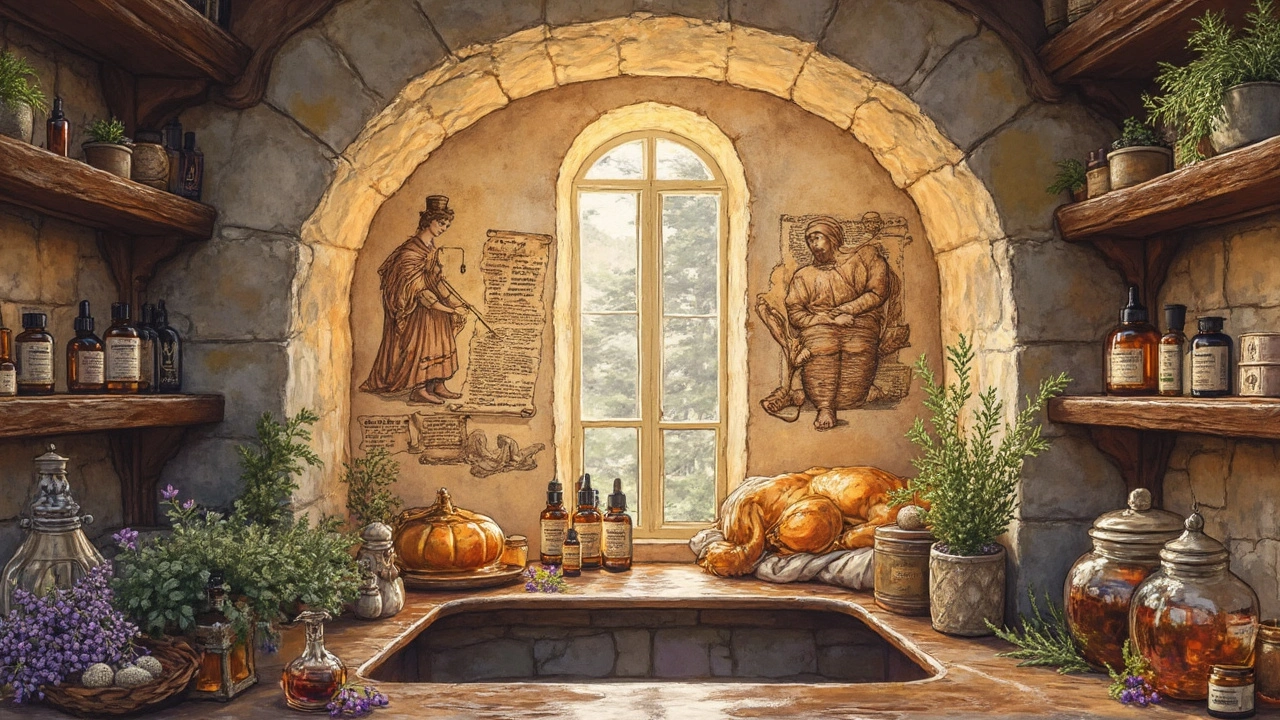Discover how aromatherapy massage evolved from ancient healing rituals to today's spa staple. This article traces its fascinating journey through different cultures and explains how essential oils became a key part of massage techniques. You'll learn practical facts about the benefits of aromatherapy massage and what makes it unique. Find out what to expect in a modern session and why people keep coming back for this sensory experience. Whether you’re new or curious, this guide will help you understand why aromatherapy massage is more than just a trend.
Origins of Aromatherapy: From Ancient Rituals to Modern Wellness
Ever wonder why a whiff of lavender can calm you down? The answer goes back thousands of years, when people first realized that plants weren’t just food—they were medicine for the senses. This story is packed with kings, monks, and travelers who turned ordinary herbs into powerful healing tools.
Early Uses of Fragrance in Healing
Archaeologists have found perfume jars in Egyptian tombs that date to 1500 BC. Egyptians burned incense to protect the dead and to soothe the living. They mixed myrrh, frankincense, and cedar oil into balms that were applied to the skin during rituals.
Across the Mediterranean, the Greeks borrowed these ideas. Hippocrates, the father of Western medicine, wrote about using aromatic oils to treat wounds and ease pain. He believed the scent could balance the body’s humors, a concept that still pops up in modern holistic talks.
In ancient China, the art of aromatherapy merged with traditional Chinese medicine. Medicinal herbs were burned or brewed into teas, and the vapor was inhaled to clear the lungs or calm the mind. Ayurvedic texts from India described how sesame oil mixed with herbs could be poured over the head to release tension—a practice that lives on as Indian head massage.
The Arabic world took these traditions further. Scholars like Avicenna refined the distillation process, creating purer essential oils. Their writings travelled along trade routes, bringing refined scents to Europe during the Middle Ages.
Aromatherapy Finds Its Way Into Today’s Spa
Fast forward to the early 1900s: French chemist René Gattefossé accidentally discovered that a burn healed faster after he applied lavender oil to it. He called the effect “aromatherapy” and started publishing research that sparked interest across Europe.
By the 1970s, the hippie movement revived ancient plant wisdom, and aromatherapy entered mainstream wellness. Today, you can find essential‑oil diffusers in offices, aromatherapy massages in London spas, and even aromatherapy‑infused yoga classes.
When you book an aromatherapy massage in central London, the therapist usually blends a base oil—like sweet almond or jojoba—with a few drops of lavender, eucalyptus, or rose. The blend not only eases muscle tension but also influences mood, breathing, and even blood flow.
If you’re curious about trying it at home, start simple. Add a couple of drops of peppermint oil to a carrier oil and massage it into your temples for a quick energy boost. Or mix lavender with a warm bath to unwind after a long day.
Understanding where aromatherapy began helps you appreciate why it works. It’s not just a trendy scent; it’s a centuries‑old practice that links plant chemistry with the body’s natural responses. So the next time a fragrance catches your nose, remember you’re tapping into a rich history of healing that started long before modern spa rooms.

